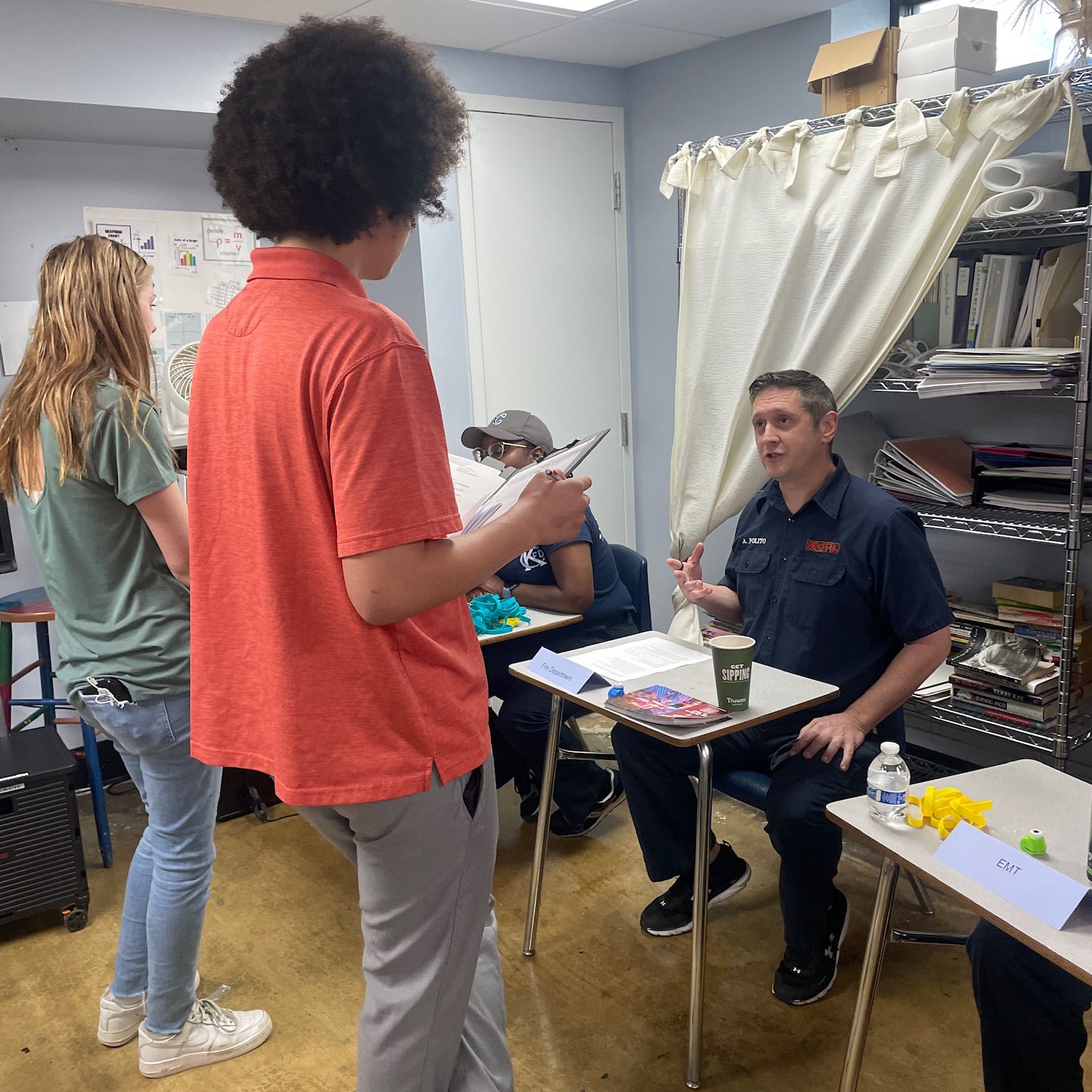
Supporting Mental Health in Schools: Practical Tips for Parents and Educators
Mental health in schools has become a vital conversation, especially for non-traditional learners navigating unique challenges. Academic struggles, social pressures, and emotional hurdles often intersect, making school a complex landscape for many students. A supportive educational environment must go beyond academics to nurture emotional well-being and resilience. Students thrive when mental health support is embedded into daily learning, relationships, and community practices.
When schools prioritize mental health, students rediscover confidence, develop self-regulation, and learn coping strategies that serve them for life. Creating this kind of supportive environment requires intentional collaboration between educators, families, and mental health professionals.
Tip 1: Create Emotionally Safe Classrooms and Home Environments
Supporting mental health in schools starts with creating environments where students feel emotionally safe and supported. Safety includes knowing that mistakes will not result in shame, punishment, or exclusion. Emotional safety allows students to take academic risks without fear of judgment, fostering both personal and educational growth. Without this foundation, learning becomes secondary to survival responses like withdrawal or acting out.
Educators should incorporate routines that foster emotional check-ins and relational trust. Simple practices like morning circles, mindfulness breaks, or open-ended sharing time help students feel seen and heard. Parents can mirror this at home with regular family check-ins, encouraging open conversations about emotions. Emotional consistency between school and home builds a strong sense of security.

Trauma-informed practices are essential for students who have experienced instability or adversity. Teachers and parents who understand how trauma affects behavior can respond with empathy instead of punishment. This approach fosters stronger relationships, helping students regulate emotions more effectively. Mental health in schools improves when emotional needs are prioritized alongside academics.
Physical spaces also contribute to emotional safety. Calming corners, sensory tools, and flexible seating provide students with ways to self-regulate when overwhelmed. Creating predictable routines and offering choices helps students feel a sense of control over their environment, which reduces anxiety and stress.
Tip 2: Foster Consistent and Open Communication
Consistent communication between educators, parents, and students is essential for supporting mental health in schools. Transparency builds trust and helps identify emotional needs before they escalate into crises. When students know that adults are collaborating on their behalf, they feel more secure and understood. This sense of security contributes directly to emotional regulation and academic success.
Educators should initiate regular conversations with families focused on emotional well-being, not just academic progress. Parents can share insights about home dynamics, stressors, or emotional changes that might affect their child’s school experience. This exchange allows both parties to respond proactively rather than reactively. Open dialogue fosters shared responsibility for the student's growth.
Families should also feel empowered to advocate for their child’s needs without fear of judgment. Schools that normalize conversations about mental health reduce stigma and create stronger partnerships with parents. Students benefit when their support systems operate as a united team, reinforcing coping strategies and communication skills.
Technology can be a helpful tool for maintaining this open dialogue. Email check-ins, video calls, or shared progress tracking apps ensure that communication remains consistent even when schedules are busy. Ongoing conversations create a network of care that supports mental health in schools daily.
Tip 3: Integrate Mental Health Support Into Daily Learning
Mental health in schools becomes most effective when therapeutic supports are woven into everyday learning rather than offered as isolated services. Small class sizes allow teachers to notice emotional shifts quickly and adjust instruction or offer immediate support. Students learn best when they feel emotionally stable, and having mental health professionals integrated into the school day makes that possible.
Classroom practices can include mindfulness exercises, grounding techniques, and emotional regulation strategies. Teachers may pause lessons for short breathing exercises, reflection periods, or sensory breaks to help students refocus. These practices teach students that mental health management is a normal part of life, not something separate or shameful.
Access to on-site licensed therapists, social workers, and counselors during the school day provides critical support. Therapy becomes part of the routine rather than an extracurricular or reactive measure. Students can process challenges as they arise, reducing the likelihood of emotional issues escalating into behavioral problems or academic decline.
Group therapy, peer circles, and social-emotional workshops further normalize mental health conversations. Students build community through shared experiences, learning empathy, communication skills, and conflict resolution alongside academic subjects. When mental health becomes part of the school culture, students gain tools that serve them beyond the classroom.
Tip 4: Teach Emotional Regulation and Coping Strategies
Teaching emotional regulation is one of the most effective ways to support mental health in schools. Students need concrete tools for recognizing stress, calming themselves, and navigating overwhelming situations. Many non-traditional learners have never been taught these skills in conventional settings, leaving them vulnerable to emotional shutdowns or outbursts.
Mindfulness exercises, guided breathing, and grounding techniques help students manage stress in real-time. Teachers and parents can model these practices, demonstrating how to pause, breathe, and reset when emotions become intense. Making these tools part of daily routines reinforces their use and effectiveness.

Cognitive reframing is another valuable strategy. Students learn to challenge negative thought patterns and replace them with more balanced perspectives. For example, shifting from “I always fail” to “This is hard, but I can try again” fosters resilience and self-efficacy. Regular practice of this skill builds long-term emotional flexibility.
Physical coping tools also support emotional regulation. Items like stress balls, weighted blankets, or fidget tools provide sensory input that calms the nervous system. When students are taught how and when to use these tools appropriately, they gain independence in managing their emotions effectively.
Tip 5: Build Resilience and Life Skills Through Strength-Based Learning
Focusing on strengths rather than deficits transforms how mental health in schools is supported. Many non-traditional learners have internalized narratives of failure from past educational experiences. Shifting the focus to what students do well fosters self-esteem, motivation, and emotional resilience. Strength-based learning helps students rediscover their capabilities.
Project-based learning offers a practical way to integrate this approach. Students work on meaningful projects that align with their interests, building problem-solving, collaboration, and perseverance skills. The process of setting goals, facing challenges, and completing tasks mirrors the emotional resilience needed in everyday life. Academic success becomes intertwined with emotional growth.
Social-emotional learning workshops focused on communication, conflict resolution, and self-advocacy further support mental health in schools. Students learn how to navigate relationships, express needs, and resolve disagreements respectfully. These skills are critical not only for academic environments but for future employment, friendships, and family dynamics.
Preparing students for life beyond school includes teaching practical skills like stress management, time organization, and self-care routines. When students understand how to balance responsibilities with emotional wellness, they are better prepared for independence. Lifelong resilience is built through the consistent practice of these tools in a supportive learning environment.
Partner With Us to Support Mental Health in Schools
If you are searching for a school where mental health in schools is treated as foundational, we invite you to connect with us. Our program offers small class sizes, integrated therapeutic support, and strength-based learning that fosters both emotional and academic growth. Learn how we help students rediscover confidence, resilience, and a sense of purpose through a holistic, student-centered approach. Join a community where mental health and education go hand in hand for lasting success.




